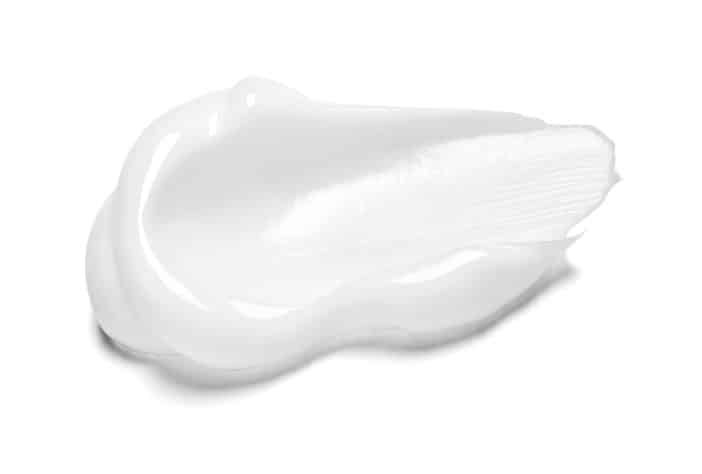Free From …

In the cosmetics industry, there is currently a new trend that is gaining popularity. Clean Beauty or free from beauty is the buzzword, with “clean” in this context meaning “free from …”. However, exactly how Free from beauty is defined is often purely a matter of interpretation, because the term is currently not yet subject to any legally prescribed standard. It is therefore not infrequently used – consciously or unconsciously – in an abusive or misleading manner. The origin of “free from” cosmetics can be seen in the increasingly critical buying behavior of consumers. More and more people are paying attention to terms such as “wellness” and “naturalness”, as corresponding products make them feel better.
One focus is on “clean”, i.e., “free from” and transparently presented ingredients. After all, environmentally and health-conscious consumers are now well aware that synthetic additives such as fragrances and preservatives can cause irritation and allergic reactions. Labels are therefore studied much more critically and in greater detail than they were a few years ago. It is also a fact that more and more people suffer from particularly sensitive skin. There is also a logical explanation for this. Higher levels of exposure to environmental and air pollution, digital aggressors and stress have led to sensitized skin becoming a widespread phenomenon. No wonder: as the U.S.-based The Environmental Working Group found, women are now exposed to an average of more than 125 chemicals day after day, hidden in cosmetics, in food, cleaning products, but also in our environment. The increasing sensitivity of the skin has therefore long since become the most important issue for most consumers, with anti-aging still ranking behind.
This is leading more and more to a change in purchasing behavior, as consumers are now increasingly opting for care products that contain natural and authentic ingredients from traceable origins. The industry has long since recognized the change and created the term Clean Beauty. Cosmetics offered as Clean Beauty are said to be free from critical or controversial ingredients and not tested on animals. However, this does not mean that “free from” cosmetics are the same as declarations such as “vegan,” “free from synthetic ingredients,” or “natural.” This is merely an aid in making purchasing decisions. For consumers who consciously want to avoid certain ingredients in their cosmetic products, the Clean Beauty designation thus serves as a kind of guide and orientation through the huge product jungle.
What Clean Beauty does without
Anyone looking for “free from” cosmetics wants to do without certain ingredients. But what are these substances? Since there is no generally accepted definition of the term, the phrase “free from …” can refer to a wide variety of substance groups.
Silicones
Silicones were an integral part of many hair and face care products for many years. Depending on the area of application, they can plump up, fix or smooth. But there are also unpleasant side effects: Silicones, for example, are said to negatively affect hormone balance and even cause reproductive toxicity.
PEG (polyethylene glycols)
PEGs can improve the consistency of cosmetic products because, as emulsifiers, they combine water with oil. However, polyethylene glycols are also suspected of having a carcinogenic effect. The starting material ethylene oxide is primarily responsible for this.
Synthetic fragrances
Many synthetic fragrances are potential allergens. If they are contained in a cosmetic product, they can therefore trigger swelling or itching under certain circumstances. However, even if a product is advertised as Clean Beauty, it is not necessarily completely free from synthetic fragrances. In some Clean Beauty products, they are nevertheless contained in a low concentration (sometimes less than 1.0 percent). So, in this case, Clean Beauty does not mean completely “free from …”.
Parabens
Parabens are very controversial, because they have a similar effect on the female hormone estrogen and can therefore upset the hormone balance. Parabens are often used as preservatives, i.e. they protect the product from spoiling too early. Propyl and butyl parabens in particular have fallen into disrepute. In our entry you will find more information regarding parabens!
Phthalates
The plasticizers with the unpronounceable name are absorbed by the skin and enter the body in this way. There they can also trigger disturbances of the hormonal balance. Typical terms on the list of ingredients are the abbreviations DBP, DEHP, DEP and BPA.
Oxybenzone
Oxybenzone is considered to be irritant and allergenic and suspected of having a negative effect on the hormonal balance. Used in chemical sunscreens, it is relatively easily absorbed by the body. It has no place in high-quality clean beauty products.
Sulfates
Sulfates are salts obtained from sulfuric acid. They are used in cosmetic products because they both cleanse and foam. Unfortunately, however, they are often so aggressive that they not only remove oil and dirt, but also damage the protective lipid layer. The result: in the long term, skin and hair dry out severely. Often, sulfates also cause skin irritation and redness. Cosmacon offers sulfate-free formulations, read more about this in our matching article.
Ethanolamines
It is not at all uncommon for ethanolamines to be contaminated with nitrosamines or other chemicals. These, in turn, are suspected of promoting cancer. A no-go for Clean Beauty.
Mineral oils
Mineral oils are nothing more than filtered petroleum and are usually called petroleum, petrolatum, paraffinum or liquidum. They are often found in lotions, creams, lip balms and nail polishes. Although the substances initially actually have a slight caring effect, corresponding products can also clog the pores, which means that they can no longer breathe optimally and ultimately dry out the skin. Mineral oil is similar to an airtight film on the skin surface.
Formaldehyde
Formaldehyde is suspected of having a carcinogenic effect and accelerating the aging process of the skin, but is still contained in many skin and hair care products. In addition, the substance can trigger allergies and irritate mucous membranes even in the smallest doses. Although formaldehyde is rarely used “pure” in cosmetics nowadays, since in most cases it is a so-called splitter from other ingredients, the side effects are nevertheless not different from pure conventional formaldehyde. Not to be underestimated is also the fact that formaldehyde vapors are considered to be extremely toxic.
Is the term “free from” a guarantee for clean, cosmetics?
Clean Beauty products are supposed to contain very few or even no questionable ingredients, although the term is not tied to strict legal requirements. There is therefore no guarantee that a Clean Beauty product is actually “free from …”. Although the designation Clean Beauty or “free from” cosmetics signals to consumers that they are doing their skin or hair good with it, how natural the product actually is can only be determined once the composition has been closely scrutinized. It is not uncommon for Clean Beauty advertising to tout a naturalness that does not correspond at all to the list of ingredients.
Clean Beauty is a catchword that arose for marketing reasons and suggests proximity to natural cosmetics.
You cannot recognize genuine natural cosmetics from this yet, because here natural oils from “controlled organic cultivation (kbA)” must be used and ideally the natural content must be stated
in % (based on ISO 16128).
We do not recommend certification according to one of the well-known natural seals, because here the providers of such seals also want to earn money and unfortunately offer no guarantee of better quality.
The safest way is a thorough analysis of the products. Nowadays, even minimal traces in the ppb (“parts per billion”) range can be detected. It is therefore advisable to focus on one’s own cosmetic philosophy and to use designations such as “We refrain from using …”. It also makes sense to precisely state the active ingredients and valuable components contained. Clean, free from beauty is only genuine and authentic if there is analytical evidence that certain critical substances are actually not contained.
Cosmacon’s Clean Beauty seal is based on the latest scientific and production knowledge. It is a reliable and sensible alternative to the confusion of current seals and offers you many advantages. Free from cosmetics could become your starting point for building a cosmetics brand after all. If you would like to use our Clean Beauty seal, please inquire today.
High quality “Free from” products from Cosmacon
To ensure that Clean Beauty is not just a clever marketing strategy, but actually stands out as a high-quality product, a precise analysis of the ingredients is indispensable. After all, every brand has its very own definition of the term Clean Beauty: so, it is all the more important to convince with genuine quality. In cooperation with our analytics partners, we are happy to develop and produce actual Clean Beauty products for you that are more than just a sales-promoting trend.
Sources:
The banned sunscreen ingredients and their impact on human health: a systematic review.; Int J Dermatol. 2020 Sep;59(9):1033-1042.
Towards a paradigm shift in environmental health decision-making: a case study of oxybenzone.; Environ Health. 2022 Jan 8;21(1):6.
Phthalate Exposure and Long-Term Epigenomic Consequences: A Review.; Front Genet. 2020 May 6;11:405.
Toxic Effects of Di-2-ethylhexyl Phthalate: An Overview.; Biomed Res Int. 2018 Feb 22;2018:1750368.
Cosmetics Preservation: A Review on Present Strategies.; Molecules. 2018 Jun 28;23(7):1571.,
Parabens and antimicrobial compounds in conventional and „green“ personal care products.; Chemosphere. 2022 Jun;297:134019.
Minireview: Parabens Exposure and Breast Cancer.; Int J Environ Res Public Health. 2022 Feb 8;19(3):1873.
